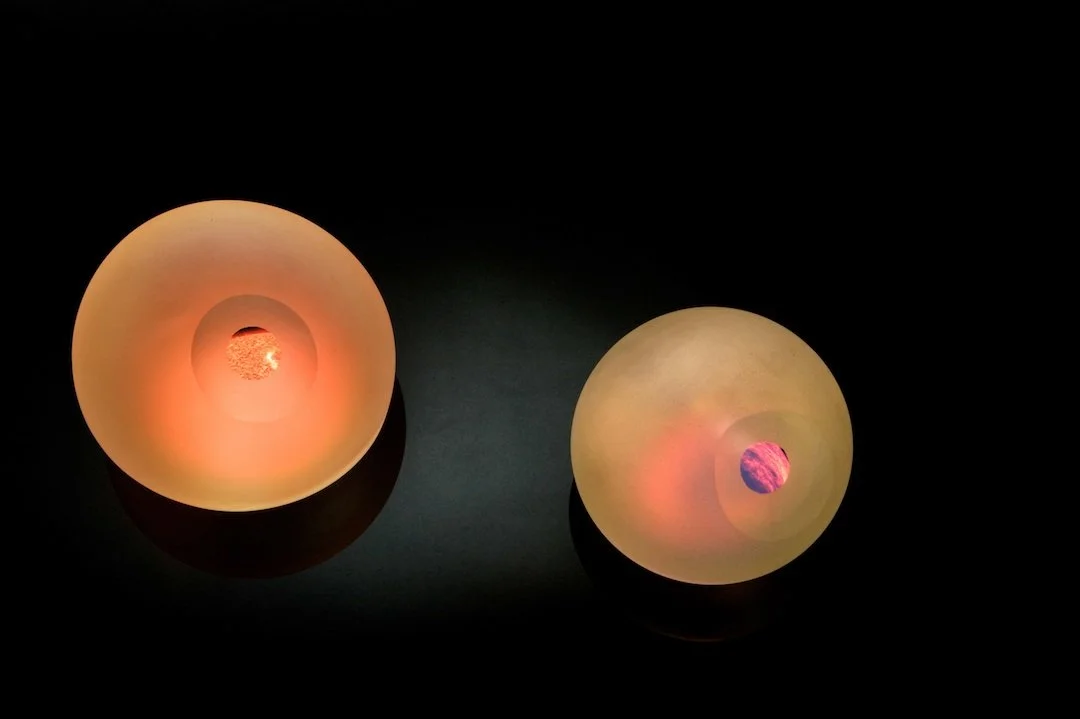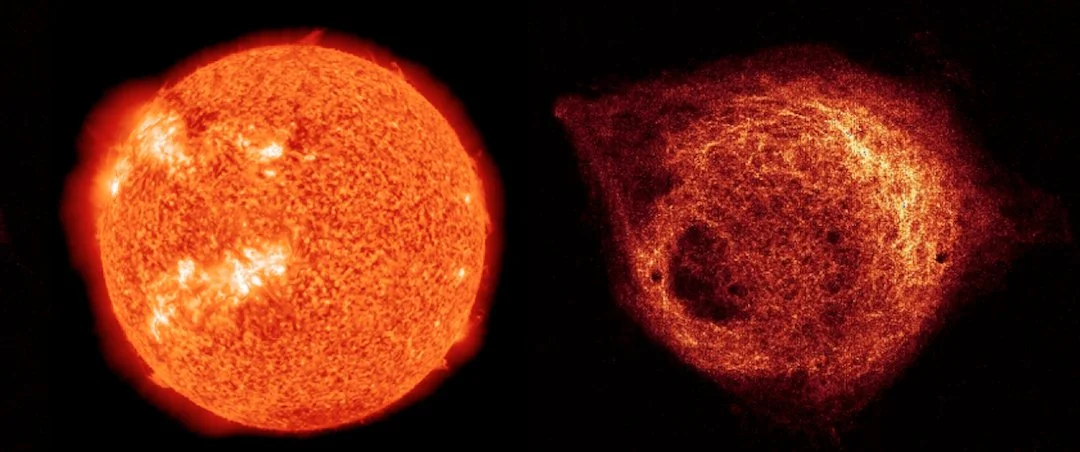
Making Sense
Craft and Fed Square
8th September - 15th October, 2011.
Artists - Jasmine Morgan Ryan and Debbie Symons
Making Sense combines the works of Targett and Symons’ which investigate both atmospheric and political interests in the ecological conundrum.
The way we make sense of the world has dramatically altered in recent years due to the vast amounts of scientific data, regarding the environmental dilemma. The conceptual challenge presented within the works focuses on three central questions:
-How has science changed the way we view nature, and how has this heightened ecological awareness changed our world view?
-How do contemporary artists through craft and design communicate ideas of such complex magnitude?
-How can craft materials be used in innovative ways to discuss ethereal constructs of nature such as the ozone and species decline?
The body of work presented unravels the earth’s life support system, placing a lens over our questioning perception and collected historical data, simultaneously exploring micro and macrocosmic scale. The exhibition researches the atmosphere of rediscovery surrounding environmental aesthetics, discussing the impact of multifaceted aspects of scientific examination.
Through contemporary craft methods, Symons and Targett consciously use materials that reflect the concepts investigated in their works. Targett’s work addresses awareness of the earth’s atmosphere through contemporary and historical mapping. Utilising dichroic glass as an innovative medium, the work revaluates the material’s original use for the visor of space suit helmets by drawing a parallel between the innate protective qualities of the material shielding the astronaut from the sun in the same manner the ozone protects the earth.
The historical, political and environmental predicament surrounding Antarctic and its waters is explored in Symons drawing and video works. By using a historical government archive, Symons maps the impermanence of the climate and landscape, charting the multifaceted effects within this region on the 60 migratory species that rely on the area.
Making Sense is the fourth exhibition in which Symons and Targett have collaborated. They have worked closely with one another for some years, developing a substantial thread that tethers between their arts practice. The conceptual underpinnings of their work complement one another. This has made it possible for them to represent their ideas and philosophies collectively at key moments in the creative process.








Artwork Presented -
Life Support Systems, 2011.
Life Support Systems: from Earth (left)
Life Support Systems: Ether (middle)
Life Support Systems: View from Tomorrow (right)
Glass and Perspex
L 950 W 250 H 950 mm
Life Support Systems uses NASA’s space suit helmet glass to create a series of three atmospheric weather maps charting shifting weather conditions in the atmosphere over Antarctica that have global implications. The maps are hung sequentially and read from left to right. The unfolding narrative of shifting weather is described in short texts below each work that evolve from history of monitoring Earth’s atmosphere to today’s attitudes towards Climate Change: the forecast for tomorrow. The aim of the series was to examine how the forecast for tomorrow’s weather is reliant on our perception of our environment today. The work is fabricated from glass that was originally used as a part of the life support system of a space suit and drawing a parallel with its natural counterpart, the Ozone Layer.
1. Life Support Systems: from Earth (left)
From Earth the immanent threat of the ecological conundrum evades sensory perception. On a clear morning the sky appears blue, the atmosphere majestic. The unseen danger that looms above appears only as a flickering to those aware of the impending situation.
2. Life Support Systems: Ether (middle)
On the 24th of September 2006 the largest observed ozone hole was monitored in Earth’s Atmosphere. At 29.5 million km2 it more than doubled the area of Antarctica, 14 million km2 including ice.
Ether makes visible the thin reflective film of ozone protecting Earth, and outlines the inconceivable enormity of the unstable area. Like a bubble whose structural integrity has been compromised, the Earth’s life support system is tethered to an ecosystem of universal proportions from which no part is immune from the changes of its counterparts.
3. Life Support Systems: View from Tomorrow (right)
View from Tomorrow maps the forecast for changing atmospheric conditions over Antarctica as the ozone hole closes and toxic greenhouse gases are trapped. At sunset the sky is set a blaze with luminous artificial colours caused by pollution in the atmosphere, a beautiful decay predicted to intensify in years to come.
From the outside looking in it is apparent that perception is reliant on perspective. Vast amounts of scientific data produced to comprehend changing environmental conditions challenge the way we make sense of the world. The forecast for tomorrow is reliant on our perception of today.
Image - Jasmine Morgan Ryan, Making Sense, 2011. Hand-blown mirrored glass and steel.
Making Sense, 2011.
Glass and Steel
L 600 W 450 H 600mm
The mirrored hand blown glass globe Making Sense responds to Olafur Eliasson’s rhetoric on making sense- ‘The way we sense is actually something we can evaluate... we can take in our surroundings, but... as we do that, be critical about how we do it. How do we take part in the world in a way that is both responsible, but also have an impact on the world? How can I by looking at art for instance, make sense?’
-Olafur Eliasson
SFMOMA, 2007
Image - Jasmine Morgan Ryan, The Similarity of Parallel Worlds, 2012. Installation incorporating glass viewing domes and videos.
The Similarity of Parallel Worlds, 2012.
Installation incorporating glass viewing domes and videos.
L 900 W 900 H 200mm
The Similarity of Parallel Worlds visually explores the visual similarity between the micro and macro both in their physical make-up and movement; they appear worlds and yet inextricably linked.
Research for this artwork has been collated with the assistance of NASA Solar Dynamics Observatory, Monash Micro Imaging and the Monash Centre for Stellar and Planetary Astrophysics.









Exhibition Catalogue




